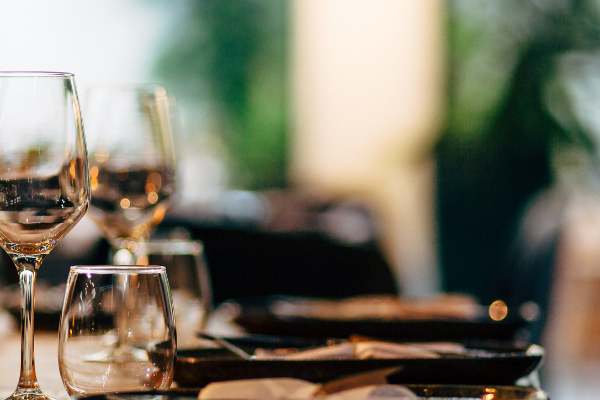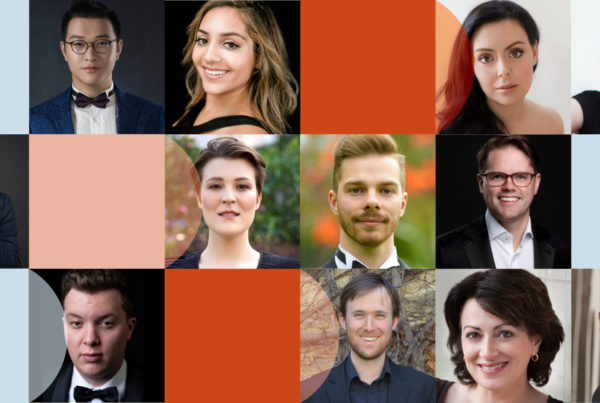”The Most Beautiful Instrument of all...
A piece about Richard StraussBy Graham Abbott
The year 1903 seems to mark a turning point for Richard Strauss. Born in 1864, Strauss’ early composing career is crowned by an extraordinary sequence of symphonic poems written between 1886 and 1903, including Don Juan, Death and Transfiguration, Till Eulenspiegel’s Merry Pranks, Thus Spake Zarathustra, and A Hero’s Life.
But in 1903 he also began writing Salome. This daring masterpiece doesn’t come from nowhere – look at the drama in the symphonic poems – but with Salome Strauss’ career as an opera composer really begins.
The power of Strauss’ operas lies, in part, in his understanding of the orchestra. He grasped the possibilities available when a composer treats the orchestra as a protagonist as much as those on stage. But those on stage – the singers – are clearly those upon whom Strauss lavished most of his composer’s love. He is on record as saying, “The human voice is the most beautiful instrument of all, but it is the most difficult to play”. His wife, Pauline de Ahna, was an experienced opera singer, and despite the often considerable technical demands he made upon his singers, Strauss can never be accused of not understanding the human voice.
The Strauss Gala program comprises extracts from six of Strauss’ operas, as well as several of his songs. Strauss made a huge contribution to the Lieder repertoire, writing more than 160 songs. Many of these he orchestrated himself; still, more have been orchestrated by others.
Intermezzo (a “bourgeois comedy with symphonic interludes”) was written in the years immediately following the first world war. After four operatic collaborations with the writer Hugo von Hofmannsthal, Strauss wanted to write something light, with a domestic flavour. Hofmannsthal wasn’t interested, so Strauss wrote the libretto for Intermezzo himself. It’s based on actual events in his own marriage; the two principal characters, Robert and Christine, are recognisable depictions of the composer and his wife. Pauline Strauss was unaware of this when she attended the opera’s premiere in Dresden in 1924; she was not impressed.
Arabella (a “lyric comedy”) dates from the years around 1930, and was premiered in Dresden in 1933. It was destined to be Strauss’ final collaboration with Hofmannsthal, who died before the final revisions to the libretto were complete; Strauss eventually finished the text revisions himself. It revels in a theme dear to Hofmannsthal, that of transformation. The sisters, Arabella and Zdenka both undergo personal metamorphosis in the opera, resulting in women who are strong and renewed, a theme encountered often in Strauss.
Capriccio (a “conversation piece for music”), Strauss’ last opera, premiered in Munich in 1942 when he was 78. It summarises a lifetime’s insights and experiences, and deals, albeit with a light touch, with a very serious issue: which is more important, the words or the music?
The final scene of the opera begins with the Countess alone, contemplating her choice between a poet and a composer: the words and the music. In the “moonlight music” the orchestra describes, without words, her dilemma and her desires.
The original version of Ariadne auf Naxos (Ariadne on Naxos) was designed as an experimental work combining a spoken play and a sung opera. The mixed reaction this received in 1912 led Hofmannsthal and Strauss to overhaul the piece in 1916, replacing the play with a sung Prologue. It has remained one of Strauss’ most popular operas, and Ariadne’s longing for death (Es gibt ein Reich) is one of his most powerful arias.
The combination of the Bible, eroticism, murder and madness both thrilled and repelled audiences in 1905 when Strauss’ operatic version of Oscar Wilde’s Salome was premiered. It’s one of the most gripping theatrical rollercoasters in existence, and Salome’s dance for the salivating, lascivious King Herod remains one of the most powerful orchestral moments in any opera.
This program ends with three extracts from Der Rosenkavalier (The Knight of the Rose), which was first performed in Dresden in 1911. The story, while delightful and occasionally comic, contains moments of great subtlety and depth, underpinned by a disturbing sense of anachronism. This last is most clearly reflected in the use of waltzes as a recurring theme throughout the piece, despite the fact that the opera is set around 1740, almost a century before the waltz became popular in Vienna.
The opera’s title refers to a tradition of sealing a marriage contract with the presentation of a silver rose to the bride-to-be (Sophie) by an emissary (the “cavalier” of the title, Octavian) of the groom (Baron Ochs). When the elaborate ritual takes place, Sophie and Octavian fall immediately in love with each other. The second extract from the opera is their rapturous duet of young love on first meeting.
The other major role in the opera is the Marschallin, who at the start of the opera we see in bed with Octavian, her much younger lover. The pain she feels on deciding to give him up so that he can be happy with Sophie underpins the glorious trio which ends the opera, and this evening’s program.
This piece by Graham Abbott was commissioned for the program of State Opera’s Strauss Gala (Girl’s Night Out) in June 2019.



